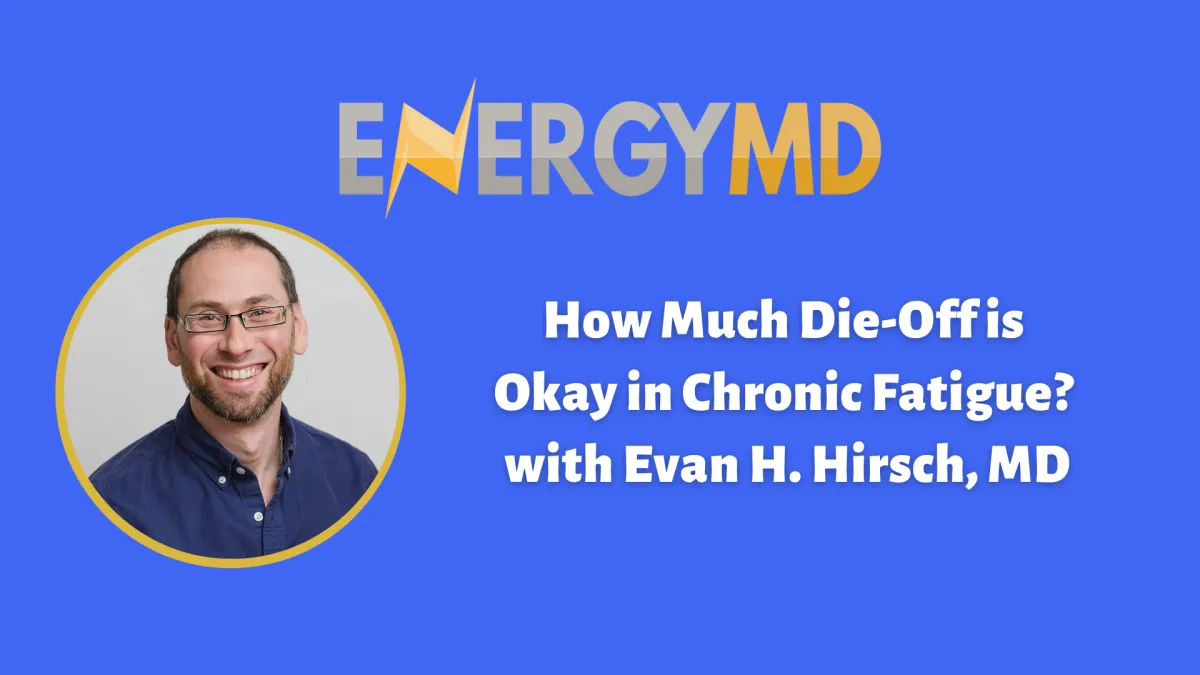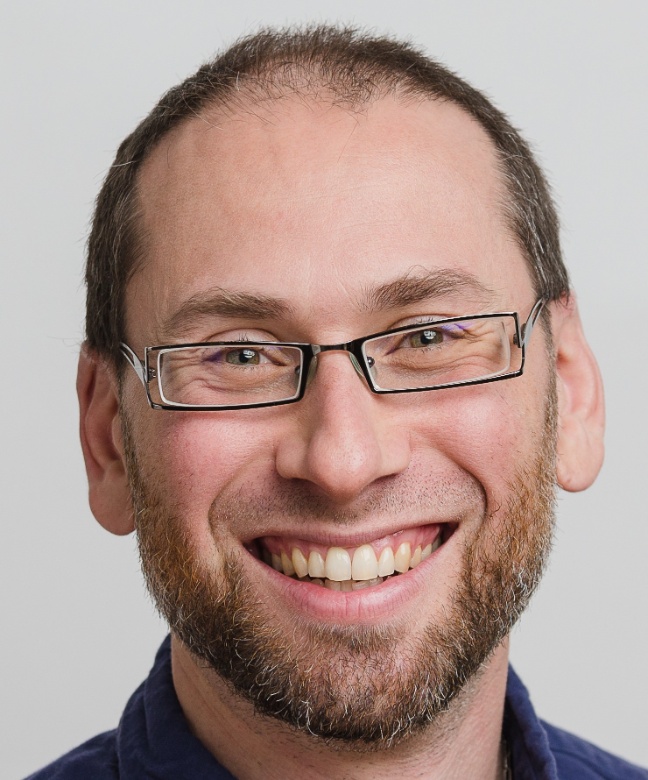
How Much Die-Off is Okay in Chronic Fatigue? with Evan H. Hirsch, MD

How Much Die-Off is Okay in Chronic Fatigue? with Evan H. Hirsch, MD
00:00
Hey there, welcome back to the EnergyMD Podcast where we help you resolve your chronic fatigue, chronic fatigue syndrome and long COVID naturally so that you can get back to living your best life. I'm Evan Hirsch and today we're gonna be talking about how much die-off should you really be experiencing and how much die-off is okay. So if you're familiar with die-off or what's otherwise known as a Herxheimer reaction or a Yarish Herxheimer reaction,
00:31
This is what happens when you start extricating or pulling out heavy metals, chemicals, molds and infections from the body. Okay. They are generally buried into the, in the tissues and it they've been in there for decades typically. And so when you start to pull them out, it's, hard on the body. The immune system see these, sees these toxins, or if you're killing infections, the infections are releasing endotoxins into the body.
00:58
and the immune system sees them and starts reacting and you get inflammation. And typically a die off reaction can be any symptom that makes you feel worse. So it can be a worsening of fatigue. It can be headaches. It can be body pains. It can be brain fog. It can be sleep issues, et cetera. And typically it's going to be associated with the thing that you're killing. So for example, if you're killing Babesia and Babesia causes you to be
01:25
Your temperature to increase where you're hot and you're sweating frequently. have bad brain fog, awful sleep, uh mood issues like anxiety to the point of panic attacks, depression to the point of suicidal thoughts. If you are killing Babesia, you will have die-off symptoms that are worse. Those symptoms will become worse. So for example, we had somebody in our program this week who was saying that all of a sudden now she's hot at night and she's sweating.
01:53
And so we talked about increasing her die off support so that, um, that would, so it wouldn't be negatively affecting her sleep. And so she did. And consequently her, uh, her sweating went down and her sleep was better. Right. And so we were able to see that was kind of diagnostic by increasing die off support. Then we were able to see, this a die off? So we have, we have kind of like a process to take people through, like, is this die off? Is this active infection?
02:22
Is this what we call a whack-a-mole where when you start killing one infection, then other infections pop out. Sometimes when we start killing Babesia, then all of sudden Bartonella pops out. And the way you know is because there are some of these symptoms that are specific for Bartonella. So for example, if we're killing Babesia and then all of a sudden you start getting cramping in your calves, usually worse at night, um, and then you're cold all the time, it could be that you're killing Bartonella.
02:52
And that then you have to start treating Bartonella a little bit more aggressively. So those are all the questions when, when people are going through our program, we always want to ask, okay, is this active infection? Is this die off or is this a whack-a-mole? Okay. But I digress. So the question is coming back to the original question is how much dial is okay for you to have. And so, and this was a question that came from our community. So my goal is for you to have just a little bit die off.
03:22
What we want when it comes to die off is we want to know that we're killing something. We want the data, but we don't want the consequences of die off. So when you have die off, you're having that inflammation. Inflammation is really hard on your adrenals, your mitochondria, your thyroid, your sex hormones, your vitamins and minerals. Okay. And so consequently,
03:47
Those are a number of the things that we replace in step two. Those are deficiencies that you have in your body. And we don't want to increase the number of deficiencies you have. just take people through this four step process where the first step is to identify what causes you have. Second step is to replace your deficiencies. Third step is to open up your pathways, your detox pathways so that you're more, you're going to be successful removing the toxic five in step four.
04:16
And so in going through this process, we replace your, your deficiencies in step two. And so when we're in step four and we're killing things and removing them out of the body and you have die off and they're starting to cause more deficiencies, it's kind of, defeats the purpose of this process. Okay. And we want you to go through this process as gracefully as possible. We want you to be able to live your life. We don't want you to be in bed because you just got hit with a sledgehammer of, um,
04:46
antibiotic treatment. Okay. And so when people hear this, they're like, gosh, I really wish I knew that there was a way to do this before I went and took a major antibiotic or a major chelating agent or IV or whatever. Because when I did that, I felt like crap for weeks. And oftentimes when you do some of these big therapies, IV chelation or IV antibiotics,
05:13
and you really are killing something or removing something intensely out of the body and you end up getting an increase in your deficiencies, you can be laid out for months and it really sets you back. And unfortunately, a lot of practitioners will say, well, you have to feel worse before you feel better. And I agree with that, but only a little bit because I only want you to feel a little bit worse so that we know you're having die off and then we can pivot and we can fix it. We can increase your step three support.
05:40
supporting the liver and the kidney and the lymph etc so that you can decrease the die-off that you're having and then you can continue ramping up on your tinctures which we use so that we have very good control about When you're having die-off right increasing by by one drop or two drops and then you have die-off Allows us to pivot a lot more easily Decreasing those tinctures or increasing your dial support so that you don't have to feel like crap, right?
06:09
And I think a lot of these practitioners who say that you have to feel worse before you feel better, they don't have good die-off tools and they don't have, they're not moving at a rate that your body can tolerate. And that's really what I found is that we want to detoxify. We want to remove these toxins. We want to remove these infections at a rate that your body can tolerate. Right? Doesn't that just make sense? And yes. Um, and is it going to take longer? I don't believe it's going to take longer.
06:38
Because the reality is is that when you use very heavy IVs antibiotics chelation therapy where you're you You feel like you're being hit with a sledgehammer and it sets you back a couple of months You know, you're going you know four steps back in order to go two steps forward and it just takes Or maybe you're going five steps forward and four steps back. It's gonna take you a lot More time than what we're doing in our program, which is three or four steps forward and one step back, right?
07:07
So eventually you're going to get there with either process. I don't have the experience that those other practitioners do. So I don't know for sure, but I assume hopefully if they've got good testimonials that they're getting people to the finish line, but it's going to be a lot bumpier and a lot less graceful. So that's my perspective is that you only want just a little bit of die-off and there are ways that you can mitigate it. And we do this in step three of our program. We, we boost.
07:36
the support and the liver and the kidneys and the lymph, et cetera. So that when you get into step four and you start pulling out the heavy metals and the chemicals and the molds and the infections that the toxins and the infections have a place to go. They have a way to get out of the body. Right. Um, and then if it's too much of a detoxification, we can pivot back to step three, increase some of that support and then pivot back into step four.
08:04
And I call this the die off dance. And I recently did a video on this, on YouTube that you can go ahead and check out. It's also in podcasts at your convenience. So hopefully that's helpful for you. If you are interested in seeing if, if we can help you, you can go ahead and you can get on a free call with me. can click on that link below, check out our latest masterclass, where I go into an in-depth video about my philosophy of care, what I've seen work with.
08:32
what doesn't in my experience over the last decade of helping people with chronic fatigue, whether it's from chronic fatigue syndrome or long COVID or something else. And when I say chronic fatigue, I'm talking about also the related symptoms that come with that, the brain fog and the body pain and the sleep issues, et cetera. And we address all of those in our program. So you can get on a free call with me and we can see if we're a good fit to work together.
08:58
And that's really the next step as part of this process. So if this was helpful for you, if you learned something, please give it a thumbs up, like and subscribe, share it with friends. So it really helps out the YouTube algorithm and getting this information out to more people who are really struggling. So thanks so much for being with me today and I'll see you in the next episode.
09:23
I hope you learned something on today's podcast. If you did, please share it with your friends and family and leave us a five-star review on iTunes. It's really helpful for getting this information out to more people who desperately need it. Sharing all the experts I know and love and the powerful tips I have is one of my absolute favorite things to do. Thanks for being part of my community. Just a reminder, this podcast is for educational purposes only.
09:52
and is not a substitute for professional care by a doctor or other qualified medical professional. It is provided with the understanding that it does not constitute medical or other professional advice or services. Thanks for listening and have an amazing day.
